Learn how to fertilize succulents
Wondering about succulent fertilizer? Often people think that you don't need fertilizer for succulents. Just like most plants though, succulents will benefit from regular fertilizing. Find out how often you should fertilize and what you should use!
Succulents and Sunshine is reader supported. We may earn a commission, if you purchase through links on our site, such as Mountain Crest Gardens, Amazon, or Etsy. We only promote products we use and trust.
As with all plants, succulents need nutrients to help them grow healthy and beautiful. Surprisingly though not many people think succulents need fertilizer!
While they can get some of the nutrients they need from the soil, fertilizer will help them grow more full and produce better colors.
Commercial Fertilizers
You need to be careful not to use a fertilizer that is too strong, otherwise the succulents can burn. However, the right fertilizer used every few months can dramatically change how well your succulents thrive.
You can also use the Miracle Grow Cactus Fertilizer as recommended on the bottle. For other commercial options, make sure they are balanced (such as a 10-10-10) and dilute them the first few times you use them to prevent burning.
Manure Tea Fertilizer
Over the winter I got to photograph with Cindy Davison of The Succulent Perch and she was kind enough to give me a bag of Haven Brand Manure Tea. I highly recommend this for a succulent fertilizer.

The idea behind manure tea is great: it's like using compost or manure as fertilizer, but you don't get messy and it doesn't stink. It's a great natural way to fertilize succulents and my succulents loved it!
It is really safe for the succulents and they grew so much larger and healthier than they would have other wise.
You'll get 3 bags for $12.95 including shipping. Only available in the United States.
Preparing manure tea
Remove the tea bag from the packaging (but leave the tea bag as is) and then place it in a 5 gallon bucket (or any large bucket you have).
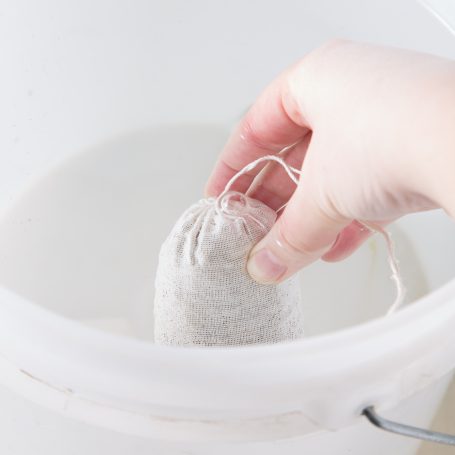
Fill the bucket nearly to the top with water. Run the water over the tea bag as you fill the bucket. The directions suggest using somewhere between 1 and 5 gallons of water. I used 5 gallons.
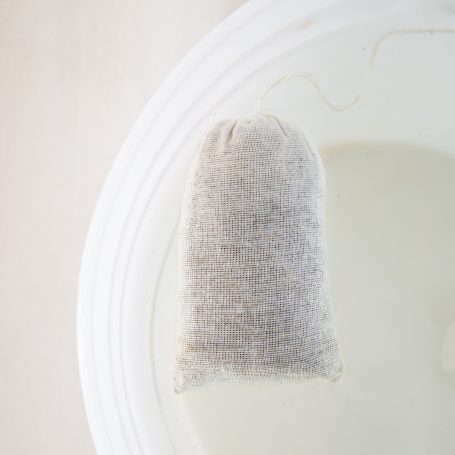
Cover the bucket and let the tea bag sit in the water for a few days. I didn't want to fish the bag out of the water later, so I left the string hanging over the edge of the bucket.
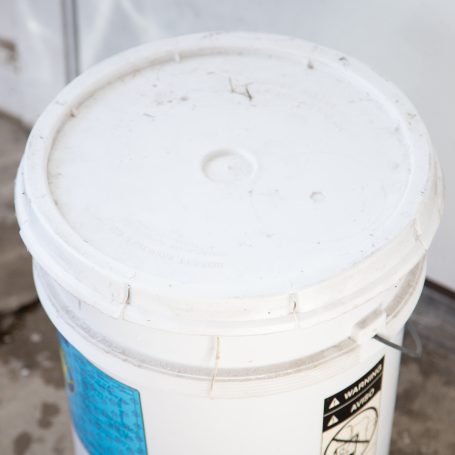
After 2-3 days (or longer… I accidentally left mine for 4), open up the bucket and remove the tea bag. Now you can begin fertilizing!
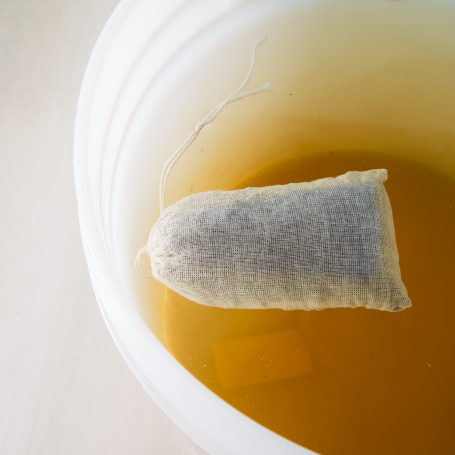
Using manure tea
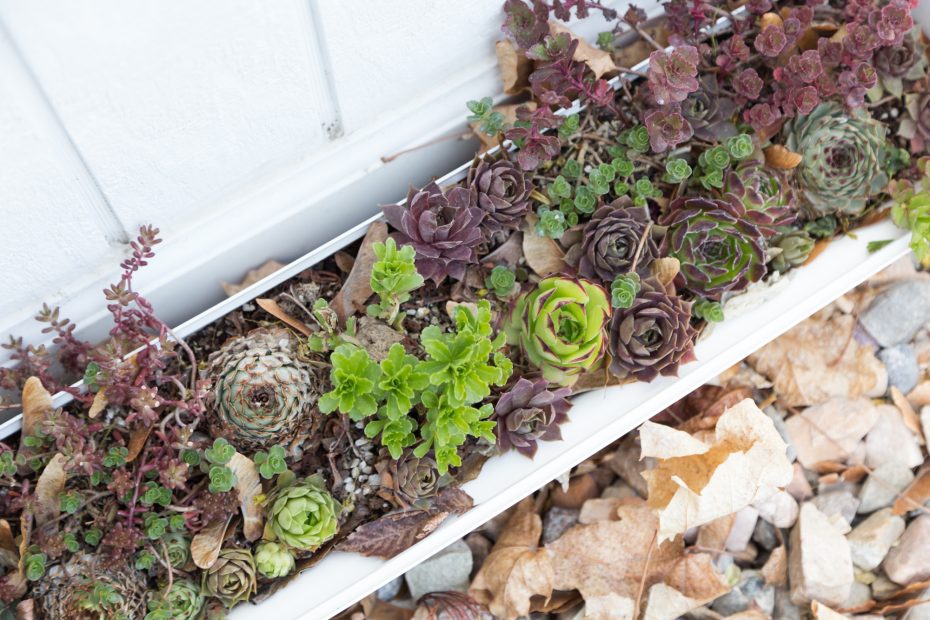
The tea is mild enough that it won't burn your succulents if it gets on top of the leaves. I poured the tea into a large watering can and generously poured it on my succulents just like I would with any other watering.
I only fertilized my outdoor succulents (I'll tell you why a bit later) and I only watered them with the tea once. Here's what they looked like before the manure tea fertilizer…
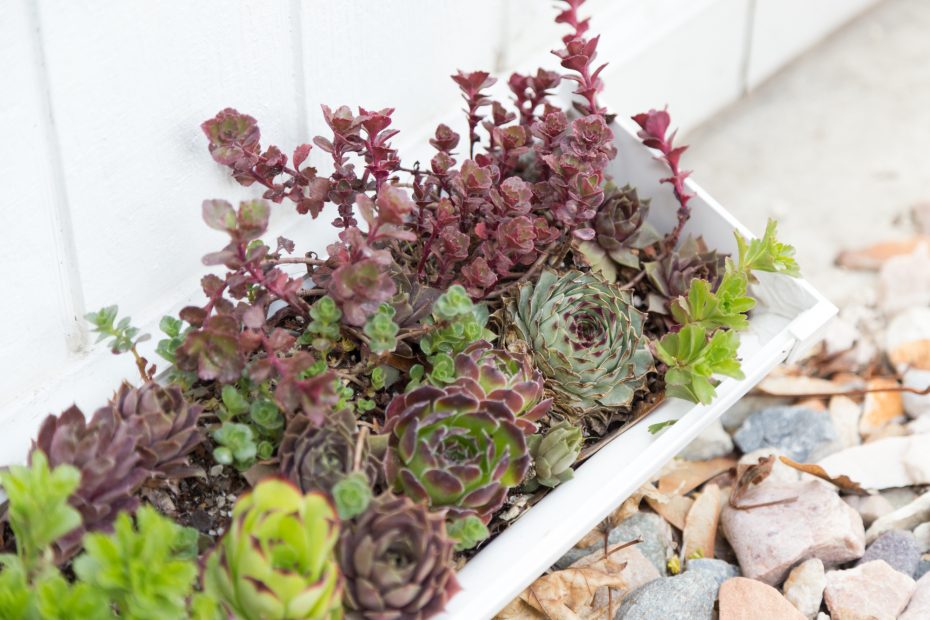
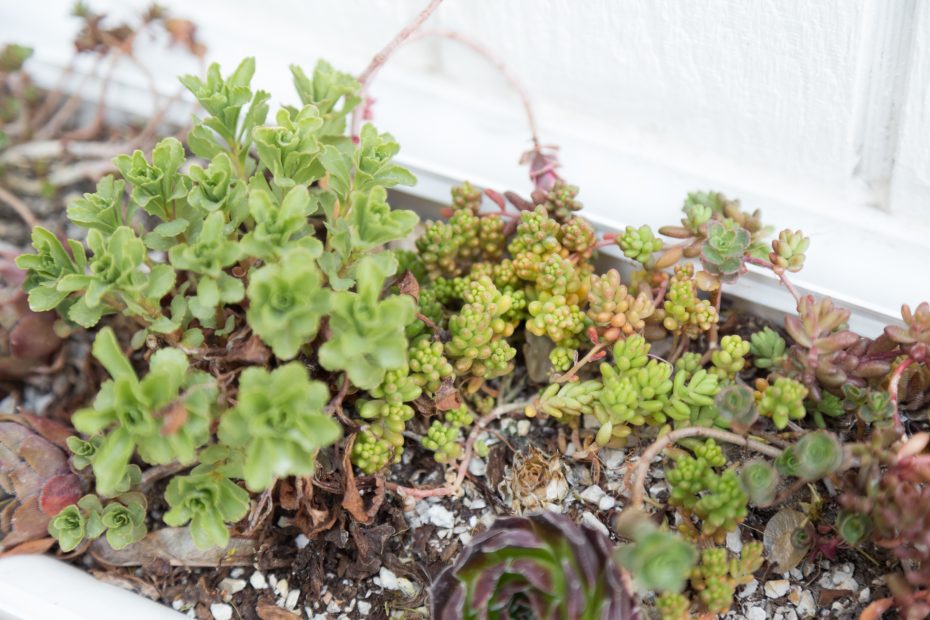
The succulents looked healthy, although they were a little sparse. I was really curious to see how much the fertilizer would help. It was so amazing to see how quickly the fertilizer helped!
Within just 30 days I noticed a difference in how filled in the container of succulents became. They were all very healthy and growing quite large.
Here's what the succulents looked like 2 months after applying the fertilizer:
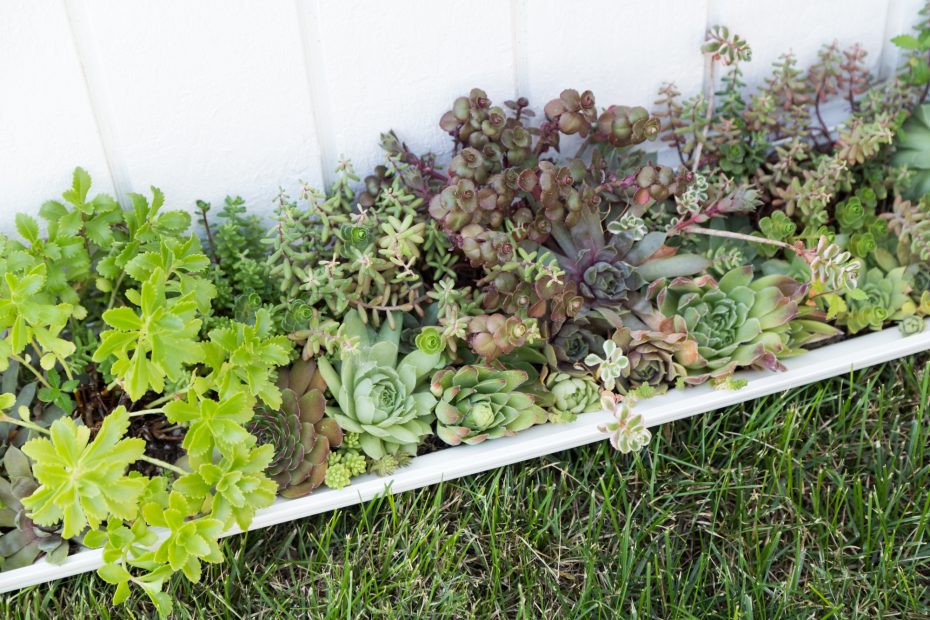
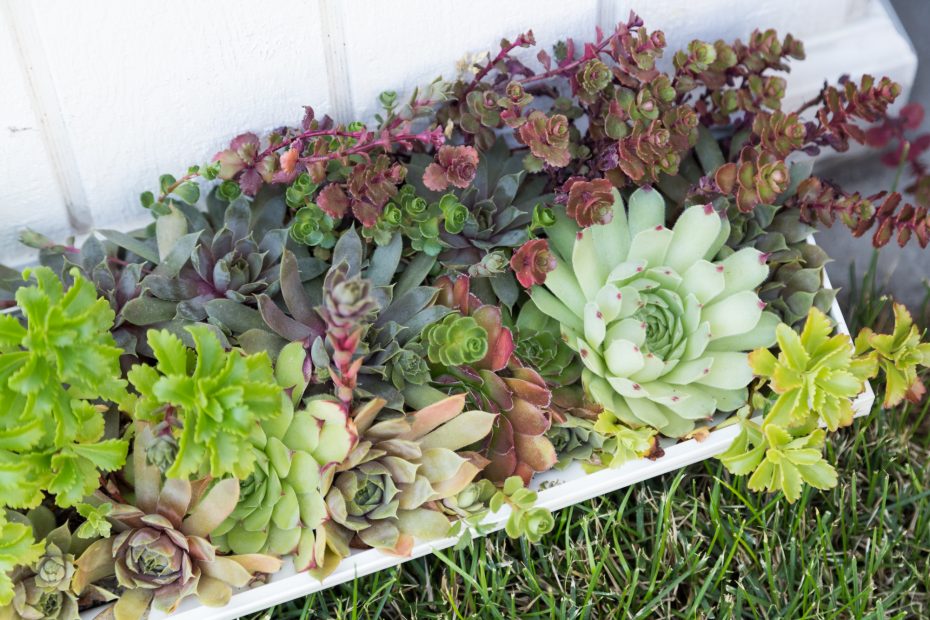
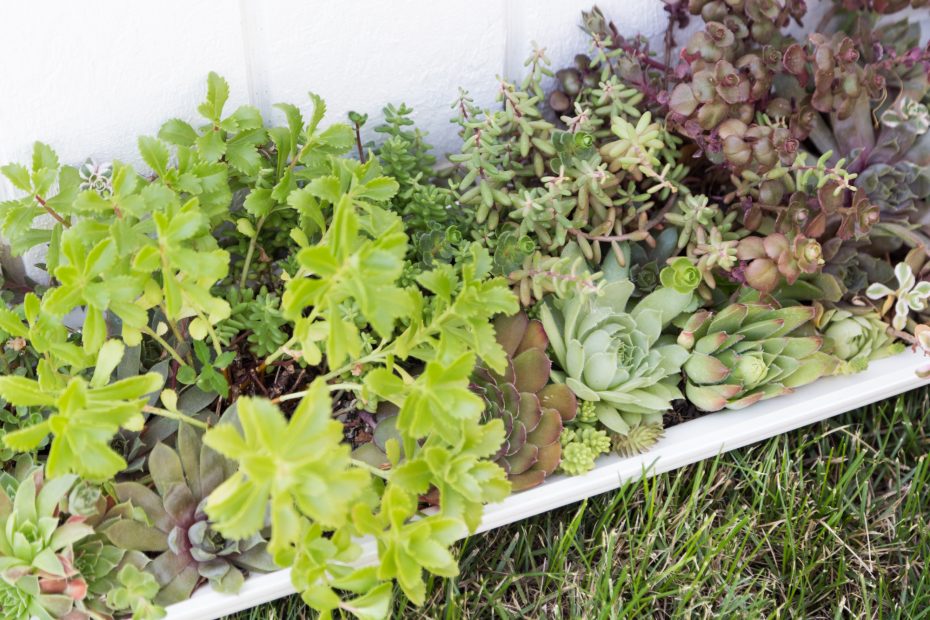
I love how full this rain gutter succulent garden is and I'm confident the fertilizer really helped. A few other planters are outside (and didn't receive fertilizer) and they don't look nearly as good.
The great thing about using the manure tea is you aren't likely to burn your succulents or over fertilize them because it's such a mild form of fertilizer (but very powerful all the same!).
Again, you can also use the Miracle Grow Cactus Fertilizer but wasn't as impressed with it. However, many of our readers have used it with great success.
How often do succulents need fertilizer?
Now that you know about a great fertilizer, you may be wondering how often to fertilize succulents. While you can fertilize succulents as often as once a month, especially if you're using manure tea, they will generally do just fine with one fertilizing each year in the spring.
For a lot of succulents this is the beginning of their growing season so they are ready to use the added nutrients. If you have mostly winter growing succulents, I'd recommend fertilizing in the fall.
If you decide to use something other than manure tea for your succulent fertilizer, stay away from slow release options. These are extremely potent and can often burn the succulents rather than help them grow. I recommend using a water soluble fertilizer diluted to half the recommended strength.
Fertilizing indoor succulents
I've gone back and forth on whether indoor succulents need fertilizer. Ultimately, I've decided to fertilize mine just once per year in the spring (when the days are getting longer).
The fertilizer causes succulents to grow more quickly which can cause a lot of stretching if your succulents aren't getting enough light.
If possible, move your succulents outdoors to a bright, shady area just after fertilizing to help them stay compact as they enjoy the boost of nutrients. If you do keep them inside, try to give them as much light as possible and even consider using a grow light.
Alternative Fertilizer Options
Other organic materials can be used as a fertilizer. For example, eggshells can be crumbled up or you can make a tea out of them.
Rinse the shells so they're free of any yolk or white, and then pour boiling water over them. Allow them to soak over night, and then strain the shells out the next morning. Pour the “eggshell tea” on your succulents to give them an added calcium boost. This may also give them some extra potassium, but is lacking in nitrogen, an element that succulents need, so you may need an additional fertilizer that contains that.
You can also use droppings from other animals too:
So, if you're itching to fertilize your outdoor succulents, order some manure tea and get started! I know you'll love how large they grow and fill in. I'd love to know about your experience fertilizing succulents!
Also, if you know anyone who you think would benefit from this post, please share it with them on social media or via email.